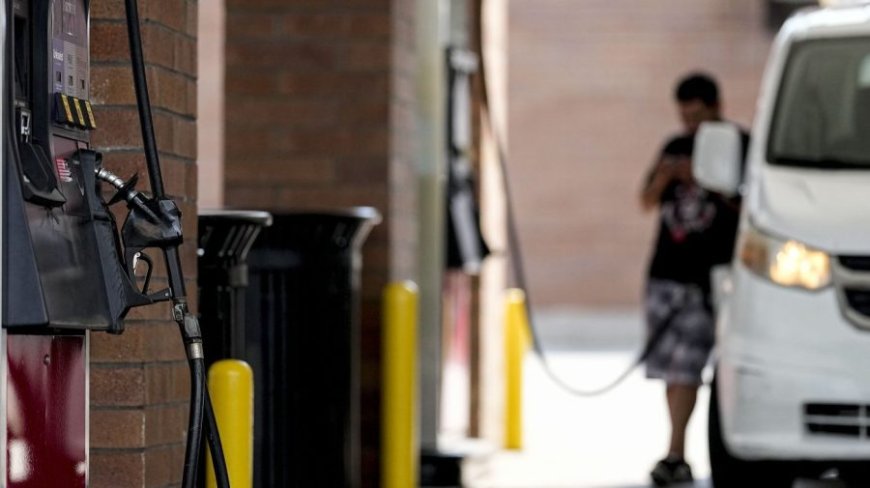Gas prices slump, marking possible good news for Harris
Oil prices hit a three-year low this week, a milestone that comes after six weeks of consecutive gasoline price decline. The drop has little to do with the Biden administration’s direct intervention, instead largely stemming from a mix of economic factors. But it could give Vice President Harris positive headwinds on pocketbook issues in the final months...

Oil prices hit a three-year low this week, a milestone that comes after six weeks of consecutive gasoline price decline.
The drop has little to do with the Biden administration’s direct intervention, instead largely stemming from a mix of economic factors. But it could give Vice President Harris positive headwinds on pocketbook issues in the final months of the election season.
As global events that contributed to higher gas prices in recent years like the COVID-19 pandemic and Russia's 2022 invasion of Ukraine "get further away in the rear view," said Patrick DeHaan, head of petroleum analysis at GasBuddy, "the market is coming into a better sense of balance."
“So it certainly is good news for the incumbent party, potentially, that gas prices are falling, though I do expect there will continue to be a lot of noise from politicians on both sides of the aisle on this issue,” he said.
The national average gasoline price was around $3.25 a gallon Wednesday, down from $3.31 a week ago and $3.45 a month ago.
The decline in prices is typical for the early fall, said DeHaan.
“Americans don't tend to get out as much in fall, certainly not in winter, and that leads to less gasoline demand,” he said. “In addition, we're less than a week away from switching to a cheaper blend of gasoline that can be rolled out simply, we call that winter gasoline.”
Another factor, DeHaan said, has been a corresponding drop in the price of oil in recent weeks. Oil hit $65 a barrel, its lowest price since 2021, earlier this week, which DeHaan attributed to a combination of economic uncertainty and reduced demand in China.
U.S. oil benchmark West Texas Intermediate was trading at around $68 per barrel Wednesday afternoon after being as high as $83 per barrel in early July.
Meanwhile Tom Kloza, global head of energy analysis at the Oil Price Information Service, attributed the low oil prices to factors including expectations that supply will increase in the coming months.
Kloza particularly cited plans from a group of oil-producing nations known as OPEC+, to begin ramping up oil production in December. The plans have been delayed after previously being slated for October, but when they take effect, they are expected to bring more oil supply to the market.
“Supply and demand are fairly balanced, but the notion that on Dec. 1 we’re to get some more crude oil from OPEC+ countries and we’re going to see the growth in non-OPEC, means that there’s nobody chasing oil higher, there’s no one parking money in oil futures, and I think that’s why the numbers are so distressed these days,” Kloza said.
“The market is looking forward and it’s really frightened about December and it’s really frightened about 2025 when even some of the bullish investment banks think next year’s going to be a sloppy year for oil,” he added.
The low prices also come after a weak jobs report and subsequent stock price drop last month, which spurred some recession fears.
While the White House does not set gas prices, approval for the president frequently rises and falls with them as well as broader economic sentiment. President Biden saw a precipitous drop in his ratings during a period that also saw gas prices reaching record highs in the U.S., with much of the price increase coming in the wake of Russia’s invasion of Ukraine and economic recovery after the COVID-19 pandemic lockdowns.
Looking forward, DeHaan said that the possibility of the Federal Reserve announcing a rate cut next week is another unknown variable that could either contribute to a further decline in gas prices or cause them to tick back up.
“It depends on the signal that a rate cut could potentially send — a 50 basis point rate cut could send an alarming sign about the economy, and it could drive oil prices down, but a 25 basis point cut could send a message that is more optimistic and that could support oil prices,” he said. “So it's all going to be in the details of how much the cut is.”
Kloza said he expects prices to continue to fall, and added that he doesn’t think gasoline cost will be much of an issue come November.
“We’ll certainly be under $3 in the United States come November," he said, though he noted that "the West Coast is still a little bit of a hot spot where prices are higher.”
What's Your Reaction?





















































